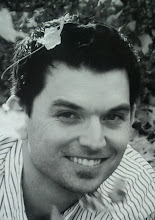What is the key to hitting the golf ball with power AND accuracy? Rotation is the key, but it must come from the correct body regions. The key areas of rotation should come from the hips and the part of the spine known as the thoracic region (the middle portion of the spine). Here come the asterisks to the previous statement. It is widely known that the thoracic spine does not rotate very much, maybe 2-3 degrees at each spinal level. But it is not only the spinal rotation in this region that is important. Shoulder blades and the lower cervical spine (the neck portion of the spine) also play important roles. So what is the only portion of the spine not mentioned as a source of rotation? The lumbar spine (the low back region). Ironically, the lumbar spine is a source of rotation for most players who lack distance and consistency. And this is a problem.
The problem is two-fold; poor shot results and an increased risk of injury. Power is created in the golf swing by stored energy being transferred into kenetic energy. The more stored energy that is created, in the form of potential energy, by rotation, the more kinetic energy is possible to transfer into the golf ball. This is the "X-Factor" that is often mentioned when the power of the pros is discussed. The rubber band effect, if you will. And if you watch the pros, their lumbar spines do not rotate segmentally - they rotate as one whole unit, as a result of hip rotation.
Risk of injury is increased with segmental lumbar spine rotation. The lumbar spine is not designed to rotate under load, yet when players hit the ball without power, they are largely doing just this, due to segmental lumbar rotation. And often, the result of less power is a harder swing. This is a clear recipe for injury - a section of the spine not designed to perform a particular function being called to perform that function harder and harder.
So, the next time you travel to the range or course, concentrate on keeping your low back (lumbar spine) straight and use your hips and shoulders to rotate. You will build power, consistency, and most importantly, reduce the risk of injury.
Sunday, March 7, 2010
Subscribe to:
Post Comments (Atom)


No comments:
Post a Comment